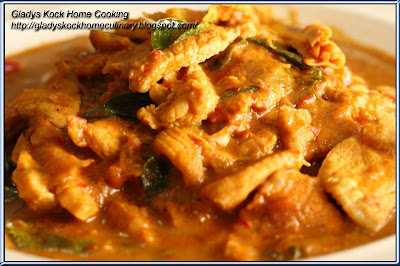Prawns are deep-fried and then coated in a sweet sticky glaze of evaporated milk and given depth of flavor with the addition of butter, curry leaves, curry powder and bird's eye chillies. Mouth-wateringly different, it's a harmonious blends of 'chilli hot' with subtle additions of aromatic curry leaves and sweetness of milk to lessen the 'bite'.
Moving beyond a big dose of fatty pork dishes, we are now shifting the attention to seafood treat, which is also calorie-laden. Sorry for those weight watchers, you have to temporarily endure the temptation that the dish induced.
Aromatic in nature, fresh curry leaves lend an irreplaceable fragrance to this dish and is enhanced by the sting from the bird's eye chillies and the lovely sweetness from the evaporated milk and sugar. Curry powder is thrown in to impart a little bit of local flavor, making this shrimp course bursting with flavors and unique on its own.
If you wish to lay your hands on the dish in your very own kitchen, here's the how-to recipe. 奶香虾食谱
Ingredients :
600g medium to big prawns, slit back and deveined
2 tbsp butter
2 tbsp curry leaves
2 tsp chopped bird's eye chillies (cili padi)
100ml evaporated milk
Seasoning :
1/2 tsp salt
1 tsp sugar
1 tsp curry powder
Method :
1. Heat up oil in a large non stick skillet, when the oil turns hot, deep-fry prawns until cooked. Dish up and drain in paper towels.
2. Melt butter in a skillet, saute curry leaves and bird's eye chillies until fragrant. Add in evaporated milk, seasoning and bring to boil.
3. Add in pre-fried prawns and stir-fry at high heat, toss to mix well. Dish up and serve immediately while hot.



+Red+Sauce.jpg)

.jpg)
+%E9%85%BF%E8%B1%86%E8%85%90.jpg)
+%E9%85%BF%E8%B1%86%E8%85%90.jpg)







